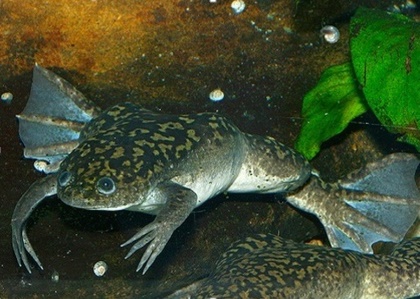Sandbox Reserved 1246
From Proteopedia
Contents |
genetics is ok
'Molecules it Interacts With and where '
The protein binds to GDP as well as the following ligands in order to promote the attachment of the protein complex to the ribosome A site.
PHOSHOAMINOPHOSPHONIC ACID-GUANYLATE ESTER
PHENYLALANINE
MAGNESIUM ION
'Origin'
It has domains that are created in yeast (phenyl-transfer RNA) , in the heat resistant Thermus aquaticus (EF-Tu elongation factor, and can be synthetically manufactured.
'Structure'
It has 3 domains. G proteins, Elongation Factors, and the EF-Tu/eEF-1alpha/eIF2-gamma C-terminal domain. It is composed of 6 chains, which combine in alignment.
Specific are highlighted here. The ligands listed above, GDP, Phe, and Mg+2 ion each attach at these locations which are still being explored.
which play a crucial role in binding to the ribosome during translation. They form positive pockets with which negative amino acids can bind to.
'Molecules it Interacts With and where '
The protein binds to GDP as well as the following ligands in order to promote the attachment of the protein complex to the ribosome A site.
PHOSHOAMINOPHOSPHONIC ACID-GUANYLATE ESTER
PHENYLALANINE
MAGNESIUM ION
'Origin'
It has domains that are created in yeast (phenyl-transfer RNA) , in the heat resistant Thermus aquaticus (EF-Tu elongation factor, and can be synthetically manufactured.
'Structure'
It has 3 domains. G proteins, Elongation Factors, and the EF-Tu/eEF-1alpha/eIF2-gamma C-terminal domain. It is composed of 6 chains, which combine in alignment.
Specific are highlighted here.
which play a crucial role in binding to the ribosome during translation.
'Function"
The protein complex participates in placing the amino acids in their correct order when messenger RNA is translated into a protein sequence on the ribosome by promoting GTP-dependent binding of tRNA to the A site of the ribosome. In other words, it is involved with elongation during polypeptide synthesis.
| |||||||||||
Zach and Rohith's molecule page.
Our molecule is 1aoi.
Introduction:
Our molecule is a single complex between the DNA and the multiple histone proteins. This is a core component of the nucleosome. The nucleosome is the basic packaging unit of DNA and compacts chromatin. It consists of histone proteins and DNA wrapped around those proteins. The nucleosome is involved in the regulation of transcription, DNA repair, replication and chromosomal stability.
About 1aoi:
|
A typical nucleosome has an of eight histone proteins that are in contact with a 146 bp long DNA fragment. In a real cell, when the chromatin needs to be more condensed, the nucleosomes fold onto themselves to create a tightly packed structure made of several nucleosomes. When the nucleosome is tightly wrapped as seen in this diagram, much of the information encoded in the DNA is inaccessible. In order to access this information, it must be unwrapped from the histone proteins. This is how it is able to regulate the processes mentioned above. Nucleosomes are not in prokaryotes, but are in archaea and eukaryotes. This particular complex comes from the African clawed frog.

Polarity
The reason that DNA and the histone proteins are able to be condensed so tightly is because of the interactions between their charges. DNA is a negatively molecule while the histones are positively charged proteins. The high content of positively charged amino acids allow those proteins to closely associate with the DNA. Without this structure, DNA would not be as tightly condensed in the nucleus and would take up extra space in the cell.
